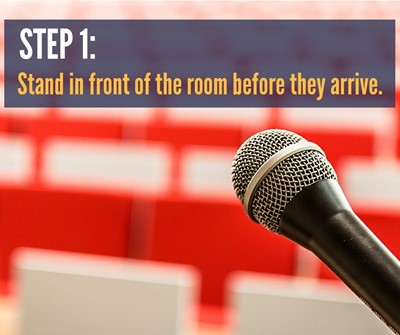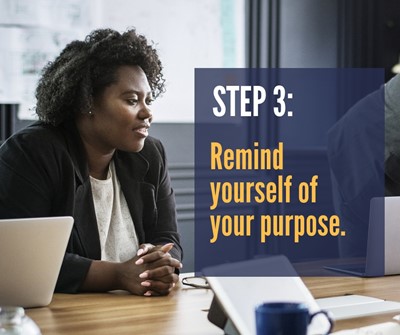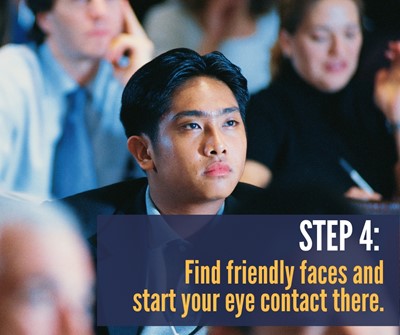
You won’t be surprised to learn that nerves are a hot topic among students at The Buckley School—and everyone’s heard, at some point, that public speaking is a top-ranked fear for most.
We don’t offer up easy solutions, because the ones that have worked best for us have come with time, hard work, advanced planning, and practice.
But what happens when you’re five minutes away from having to stand up and speak? Maybe you haven’t had the luxury of time and planning. Or maybe, in spite of those, you still feel an attack of nerves coming on.
There are some simple things you can do to calm your presentation anxiety, techniques our coaches have used to settle their own public speaking jitters:

Step 1. Stand in the spot before people arrive, to see how it feels.
Ideally, a speaker would be able to visit the venue and go through a practice run. That’s not always possible. Or the presentation might be in a small meeting room, where you’re expected take your turn and deliver, “no big deal.”
We find that speakers benefit greatly by standing in the spot where they’ll deliver, even if it’s just for a minute before the rest of the room arrives. When you can stand where you’ll present BEFORE you have to speak, you can get that element of the unknown out of the way.
Then, when you do stand to speak, you’ll not be processing all that practical information: Oh, this is how close I’ll be to people, this is how well I can see, this is where the light glares, this is where the cord I might stumble on is taped to the floor.
Instead, you take all of that in when no one is looking—and can begin with fewer worries when all eyes are on you.

Step 2. Introduce yourself to some audience members before your presentation begins.
One way to lessen the stress is to say hello one-on-one to some members of the group, before addressing them as a whole.
Buckley School director Karen Kalutz puts this technique into practice nearly every time she speaks. "No matter the size of the audience, I always take time before my talk to introduce myself to a few people and strike up a short conversation," she says. "In that way, I feel I have a friend or two in the room."

Step 3. Remind yourself of your purpose: You have a message that needs to be delivered.
The Buckley School’s founder believed taking a “servant of your message” approach was the foundation of all successful speaking.
That idea can help when it comes to last-minute calming techniques. Just before you step up to speak, remind yourself of your main message and why it’s important for you to get it across.
It’s also helpful to remember that you’re not speaking to impress people with your brilliance or land the latest honor from People magazine. In your pep talk to self, take the pressure off yourself by focusing your energy on the service you are providing—the message—and why the audience needs to hear it.

Step 4. Find the friendly faces and make eye contact with these people first.
One sure way to appear confident when you don’t feel confident is to make individualized, locking eye contact with audience members.
You can use this eye contact to FEEL more confident by starting with some friendly, attentive listeners. Draw confidence from their smiles and nods. Then, in a couple of minutes when you’re feeling less nervous, branch out to the faces of those who seem more challenging.
If you’re speaking to a room full of strangers, Step #2 (introduce yourself) can help. We find that when we meet people—and know them by name—they’re much more likely to be supportive audience members. "I always seek to connect with those friendly faces in the opening portion of my presentation, then move on to others," says Karen.






